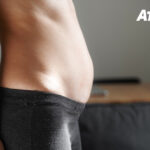 Here are my Pediatric Physical Therapy must-haves. My recommendations for the toys and equipment every pediatric PT needs in their “toolbox”!
Here are my Pediatric Physical Therapy must-haves. My recommendations for the toys and equipment every pediatric PT needs in their “toolbox”!
 1. Dynamic Disc
1. Dynamic Disc
One of my favorite tools in the pediatric PT toolbox is the dynamic disc, can be used for weight transfer and dynamic balance in seated, kneeling, quadruped and standing positions. A great sensory tool that offers two different tactile experiences!See dynamic disc in our actions five pleasure Get active with the Dyna Disc!

2. Therapy Balls
Extremely useful tool with many uses therapy ball A must-have for any pediatric PT toolbox! Great for tummy time, practicing transition moves, dynamic seated balance responses, developing trunk strength and postural control! Can be used in so many ways with kids of all ages!See therapy ball in our actions Post-hypotonia treatment ideas.

3. Foam roller
Functional tool for practicing transitions such as sitting to standing and sitting to quadruped. Great for practicing weights on hands and feet in preparation for crawling.this foam roller Great for straddling, toning the torso musculature while keeping the upper body free to participate in tabletop activities!See foam rollers in action on our website Sit 101 posts.

4. Slopes
A great piece of equipment to encourage tummy time, crawling, climbing and standing balance. Helps practice early motor milestones with toddlers and encourages dynamic movement.this the ramp Also great for treating toe walking and flat feet.Check Out Our Inclined Ramps Tummy Time Tricks post.

5. Peanut Balls
One of my favorite dynamic sitting positions!ideal peanut balls Sizing options allow child to hold hips, knees and ankles at 90/90/90 degrees with weight bearing across the floor. By aligning and activating the lower extremities, we can optimize trunk strength and postural control. The peanut ball is a good tool for practicing high kneeling, quadruped, and prone support!Check out more ideas for peanut balls on our website Five Fun Activities for Peanut Balls!

6. Bosu ball
Excellent equipment for challenging standing balance, addressing balance responses, exercising lower body musculature and promoting alignment.Practice squats, balance on one leg, and up and down steps bosu. The BOSU can also provide a great challenge for upper body loading, addressing shoulder strength and stability issues. The BOSU is also a fun sitting option for challenging the trunk muscles!

7. Wedge pad
Great tool for dynamic seated mobility, promoting postural control, trunk strength and dynamic balance. I also like to use the wedge seat while standing to work out the range of motion of the lower body muscles. There are two good options, 15″ Size Original Wedge Cushion and 10″ size Wedge Jr.. See wedge pads in action on our website toe walking post.

8. Stepping stones
Great for creating obstacle courses, practicing climbing/descending steps, balancing and motion planning!For older children, allow them to set stepping stone Encourage active participation from the planning stage to execution in their chosen configuration.

9. Balance beam kit
Fun tool for building your own balance challenges. It’s also possible to use the individual beams as obstacles to jump over, or stand them up and use them as bowling pins to knock down. balance beam kit Great for each child to build their own unique obstacle course, tackling motor planning, coordination, and of course balance work!look at our Five Fun Balance Beam Activities Get more exciting event ideas!

10. Douqiao
Great for navigation, addressing alignment and lower body strength. It can be modified to increase the step length, practice stepping in, stepping out, stepping up and jumping. Stack them to promote high kneeling, and turn them over to use as throwing targets!

11. Floor Scooter
Useful tool for sitting and prone. Addresses overall strength, movement planning, coordination, and body awareness. Link several scooters together to create new fun activities with or without a companion.look floor scooter in our actions Olympic Post.

12. Balance board
The Balance Board works the intrinsic musculature of the foot, promoting lower body strength, alignment and balanced responses.look balance committee in our actions Toe Walking Therapy Column.

13. Playground Ball
Perfect for promoting hand-eye coordination, visual tracking, bilateral coordination, throwing, catching, kicking, bouncing!this Set of six colored playground balls Great for setting up stations around a gym, school or home setting, each color represents a different ball challenge.

14. Bean bags
There are so many great bean bag options!These shape bean bag A great tool for children of all ages, providing helpful sensory input for children to identify colors, shapes, and for older children to read the words on each bean bag. Bean bags allow us to practice hand-eye coordination, object manipulation, and the movement of strength grading and throwing skills.we also like Sport Time Animal Bean Bag seen here.

15. Bubbles
It’s a great motivator for kids who are practicing sitting, standing, crawling and transitions. bubble Engage your child’s visual system as they reach for the moving bubble and they begin to shift their weight, activate postural control, combine hand-eye coordination, and put a smile on everyone’s faces!See Bubbles in action on our website Encourage independent walking positions!

16. Tactile footprint
Provides visual and tactile cues for foot placement to incorporate into many activities, addressing alignment, motion planning, body awareness and promoting muscle activation needed to maintain a stable supportive base!Check tactile footprint in our actions Toe Walking Therapy Thoughts After。 A must-have for any pediatric PT toolbox!

17. Point markers
One of my favorite portables in the pediatric PT kit. field marking Provides a great visual cue for alignment work, facilitates jumps across distances, marks stops and starts, or use for color matching activities!Check field marking in our actions Color Dot Five Fun Activities postal!
18. Pop toys
Excellent tool for bilateral manipulation, flexibility and upper body strength. Great for practicing pulling apart and pushing together to engage the hands in functional movement.I also like to use popular toys Obstacles and negative space footprints as strides or jumps. See Pop Toobs in action on our website Operation: Alignment Post.

19. Balloons
Great tool for tackling hand-eye coordination, eye tracking, strength grading, and throwing and catching skills practice.

20. Yoga set
Yoga is a great tool to add to the pediatric PT toolbox, addressing strength, balance, coordination, flexibility, motor planning, and body awareness. kids yoga set Allows the therapist, parent, teacher or caregiver to customize each yoga pose according to the child’s needs.Find out more about custom yoga kits on our website Yoga for Kids Posted Here.
Finally, the most important tool cannot be bought or crafted. Enthusiastic, positive and encouraging! Smiling and cheering can be a great way to motivate a child to stay focused, feel comfortable and confident, and ultimately succeed during PT treatment.
I hope this article was helpful to you, whether you are new to the field of pediatric PT or a seasoned veteran. I’d love to hear it, What’s in your pediatric PT toolbox?
learn more about dinosaur physiotherapy!
To continue the conversation, follow us Facebook and instagram


